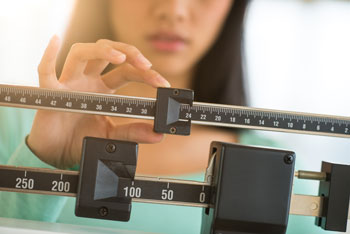
With summer around the corner, many people start considering shedding a few pounds of weight to fit into clothing or swimwear. Obviously there are merits beyond just aesthetics when considering this topic. It is no surprise that if you are carrying excessive weight, then loosing some in a healthy fashion can have a significant positive impact on your over-all health. A higher than normal body mass index, or BMI, for an extended period of time has been linked to decreased cardiovascular function, adrenal dysfunction and GI dysfunction to name a few.
There is also a very important and clear relationship with carrying increased/excessive weight and pre-mature wear & tear (degeneration) of our joints.
Let’s consider for a moment that the human body is a very well thought out weight-bearing structural entity. Our mechanisms related to movement have certain parameters and rules that they have to follow. Not all of our joints are built the same, not all bones have the same properties and not all muscles function the same way. There is a healthy “normal” that they are meant to be able to tolerate and thrive in. For instance, did you know that your joints are designed to take nutrition from pressure gradients? Certain joints in the body NEED load to even stay healthy at all. This is why inactivity is sometimes just as bad as overactivity when it comes to joints. Or did you know that not all muscles need movement to get stronger? Some need to be trained by holding the same position for long periods of time to build their endurance.
When it comes to weight, the conversation is two-fold. On one hand we have to talk about ideal load and on another hand we have to discuss how that load is actually distributed to the joints and tissues. Both of these elements together can help start the discussion that comes up very frequently at our clinic.
“Can loosing weight help reduce my neck pain, mid back or low back pain?”
1. Optimal weight has a lot to do with your body type, make up, genetics and activity level. There is no one right answer. We know that muscle is heavier than fat and that bone composition can be different from person to person. This is why the conversation should often shift gears towards a variety of more useful metrics. These can be your waist circumference, your body fat percentage or your BMI to name a few. Speak to a health professional to get these metrics done or find easy to use methods available online to do this at home yourself. The number on the weight scale does not hold as much value as these.
2. Weight distribution patterns change when we talk about different regions of the body and discussing all of them is beyond the scope of this blog. What you should take away is that our joint surfaces where the load of our bodies crosses from one bone to the other should be as close to an “optimal” position as possible for that load to be healthy and received well. Putting load unsymmetrically or favouring one side more than the other can be the cause of pre-mature wear and tear. This can lead to early onset arthritis and other mechanical problems.
At the end of the day, reducing weight and finding relief from pain can be a reality but it is more complex than that. You could have great BMI and weight for your body type and height – however, if your weight distribution is not optimal, you will still experience pain like someone who is in fact over weight.
We would love to have this conversation more specifically for you at our office. Let us know if we can help!
CONTACT US
